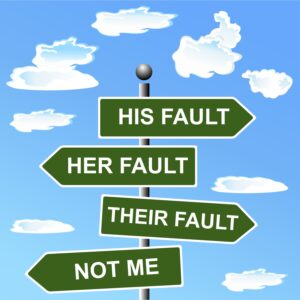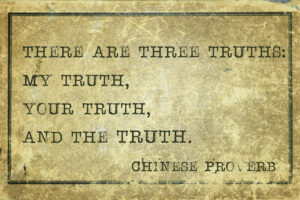In a disagreement, what is the most important thing to you – to be right, or to be able to move on? For some of us, we need to have our position accepted as The Truth. And often in mediation, that need to be ‘right’, gets right in the way of the parties being able to resolve the dispute.

Focusing on what’s needed for a resolution is more helpful than thinking about issues in terms of ‘right’ and ‘wrong’.
Often parties describe their position and it tends to be in quite black and quite terms – they are right and the other person is, therefore wrong. This is a trap. If we think about issues only as right and wrong, then if we aren’t right, then we must be wrong. Being wrong feels like a judgment-heavy, uncomfortable position to be in.
When we take a right/wrong view of issues, that makes it harder to get a resolution everyone is content with. It takes us further from the win-win result. It constrains the discussion into a binary framework. And we may feel we have little choice but to entrench and defend our position.
Focusing on right and wrong makes it almost impossible to think creatively about how to satisfy everyone’s interests and resolve the dispute.
Mediation focuses on the future, rather than right/wrong.
This is where mediation offer parties a different approach to that taken in other forms of dispute resolution. Facilitative mediation not focused on right and wrong. In many cases, it’s not particularly relevant.

It can be really challenging to move beyond that position. It is still natural for the parties involved in a dispute to fall into the right/wrong trap when talking through what’s happened.
Instead, the mediator will help the parties identify what’s going on underneath the surface of their position – what they really need to move on.
Why? Because it’s a more potentially constructive area to explore than a limiting statement that ‘I’m right and they are wrong.’ And there may be a variety of meanings.
What people could mean when they say ‘I’m right’.
When a party in a dispute or argument states ‘I’m right’ – we can take that at face value. They may well mean “I believe that it is my right to do/say/behave as I did”.

But there may be other meanings:
- “I need my perspective acknowledged”
- “I need my needs to be met”
- “I want to be heard”
- “I want the other person to agree to what I want”
- “I want to be reassured I haven’t done wrong”
A mediator helps those involved in the dispute to address and explore what’s underneath the initial positions taken by parties. Part of that may be to support and coach the parties to move to a more empathetic stance. Seeking to understand how these issues look from other perspectives.
What does the Mediator do?

Although controversial for some, in mediation and in disagreements more generally, it can be helpful to consider that we are working with at least three versions of the truth:
- The truth as I see it from my perspective
- The truth from your perspective
- The facts of the issue.
All are important to understand to reach a resolution.
Understanding perspectives is key to resolution.
It seems to me that the cases where there are clear-cut issues of right/wrong are rare. It’s all in the perspective. Instead of getting stuck in the right/wrong trap, seeking to understand those differing perspectives has been much more constructive in terms of getting the issues resolved and helping the parties to move on.

 By
By 


